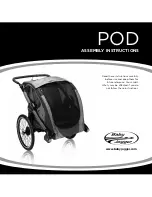
Insulating fluid maintenance
The operation of a conventional step voltage regulator
includes switching of a load tap-changer. Switching of this
tap-changer will result in a small amount of arcing during
each operation. This is different from a typical transformer
or voltage regulator equipped with a vacuum interrupter.
Under normal conditions, you would expect no internal
arcing in a transformer and as a result, elevated levels of
arcing gases are an indication of trouble. For conventional
voltage regulators, arcing occurs inside the tank on every
tap change. As a result, it is expected that gas levels will
build up over time.
Because of the characteristic arcing of tap-changer contacts,
dissolved gas analysis (DGA) is only marginally useful when
evaluating insulating fluid from single-phase step voltage
regulators (SVR). There are no industry standards to evaluate
DGA results for an SVR. The best method of evaluating DGA
results would be to compare values between subsequent
tests. Unusually rapid buildup of gases from one test to
another could be a sign of internal problems. Contact your
Eaton representative for further assistance in evaluating
DGA results.
When performing periodic maintenance of voltage
regulators, insulating fluid characteristics should be
for information on the
characteristics that would be part of the evaluation and the
levels to be measured against. When the fluid fails to meet
the requirements shown in the tables, steps should be
taken to filter or replace the fluid. These steps should be
performed during normal maintenance intervals.
EVER-Tap voltage regulator insulating fluid
maintenance
The EVER-Tap voltage regulator is equipped with an arc
interrupter. The arc occurring during tapping operations
occurs inside of the vacuum bottle. As a result, the
dielectric fluid will not become contaminated in the same
way as a conventional voltage regulator. Dissolved gas
analysis results from an EVER-Tap voltage regulator can be
treated like the results from a conventional transformer or
OLTC.
Table 5 . Envirotemp™ FR3™ Fluid Characteristics
(natural ester
a
)
Characteristic
New
Used
Dielectric Strength (kV) ASTM D1816:
2-mm gap
1-mm gap
≥ 45
≥ 25
≥ 40
≥ 23
Interfacial Tension (mNm) ASTM D971-91
—
—
Water (mg/kg) ASTM D1533
≤ 300
b
a
Per IEEE Std C57.147™-2008 standard
b
Recommended limit is application- and user-specific. Suggested limit would be the same
relative saturation limit used for mineral oil at a given temperature.
Table 6 . Mineral Oil Characteristics (Type II
a
)
Characteristic
New
Used
Dielectric Strength (kV) ASTM D1816:
2-mm gap
1-mm gap
≥ 45
≥ 25
≥ 40
≥ 23
Interfacial Tension (mNm) ASTM D971
≥ 38
≥ 25
Water (mg/kg) ASTM D1533
≤ 20
≤ 35
a
Per IEEE Std C57.106™-2006 standard
Sampling insulating fluid
Precautions should be taken to ensure the best specimen
possible when sampling insulating fluid. Here are some
recommendations:
●
●
Liquid samples must be drawn from the sampling valve
located at the bottom of the voltage regulator tank.
●
●
A sample of the liquid should be taken when the unit is
warmer than the surrounding air to avoid condensation of
moisture on the liquid.
●
●
Relieve tank pressure or vacuum by operating the
pressure relief valve before taking the sample. Care
should be taken to wipe the valve clean and dry before
pulling the ring.
●
●
Collect liquid into a large-mouth glass bottle that is clean
and dry.
●
●
When sampling, a metal or non-rubber hose must be
used; oil will leach sulfur from rubber.
●
●
Before collecting a sample, drain a sufficient amount of
fluid from the valve to ensure that the sample collected is
not from the valve, but from the bottom of the tank.
●
●
Before collecting a sample, rinse the sampling bottle
three times with the liquid being sampled.
●
●
Do not permit the fluid to splash into sampling container;
splashing can introduce air and moisture into the fluid.
●
●
Test samples should be taken only after the fluid has
settled for at least 24 hours; longer for cold fluid.
WARNING
Equipment damage, personal injury or death possible .
Do not lower fluid in tank below the critical fluid level .
Insufficient fluid risks unit failure, which could result in
severe personal injury or death to exposed personnel .
FR3 insulating fluid application
Viscosity characteristics of FR3 necessitate a mechanism
to inhibit tap-changer operations for low-temperature
applications.
In such cases, a thermometer will be provided as a standard
feature. The thermometer will be configured to close a
contact when insulating fluid temperatures reach -10 °C.
26
VR-32 and EVER-Tap™ Voltage Regulator
InstallatIon, operatIon, and MaIntenance InstructIons
MN225008EN June 2020
















































